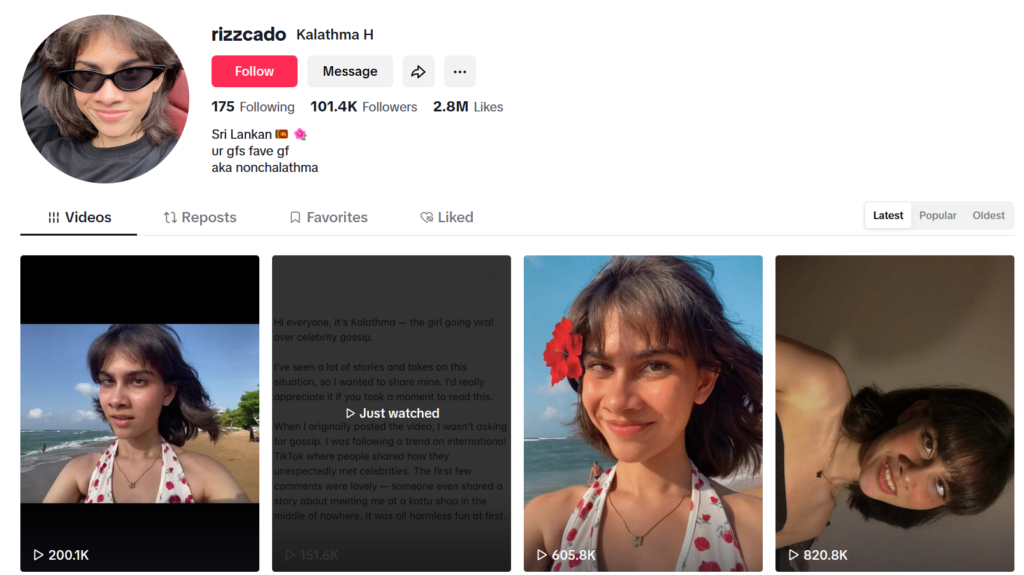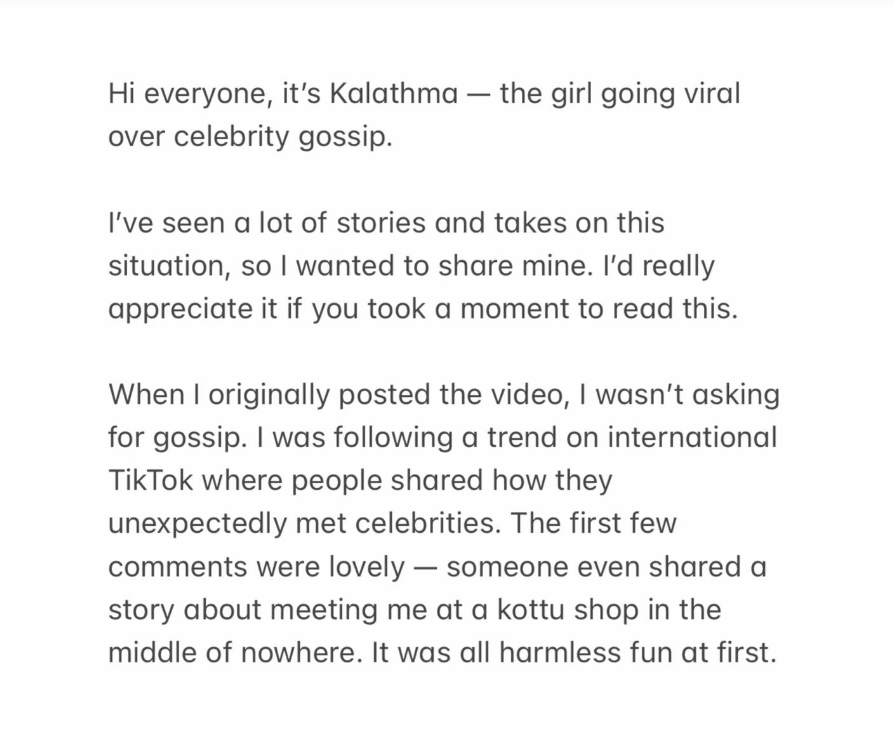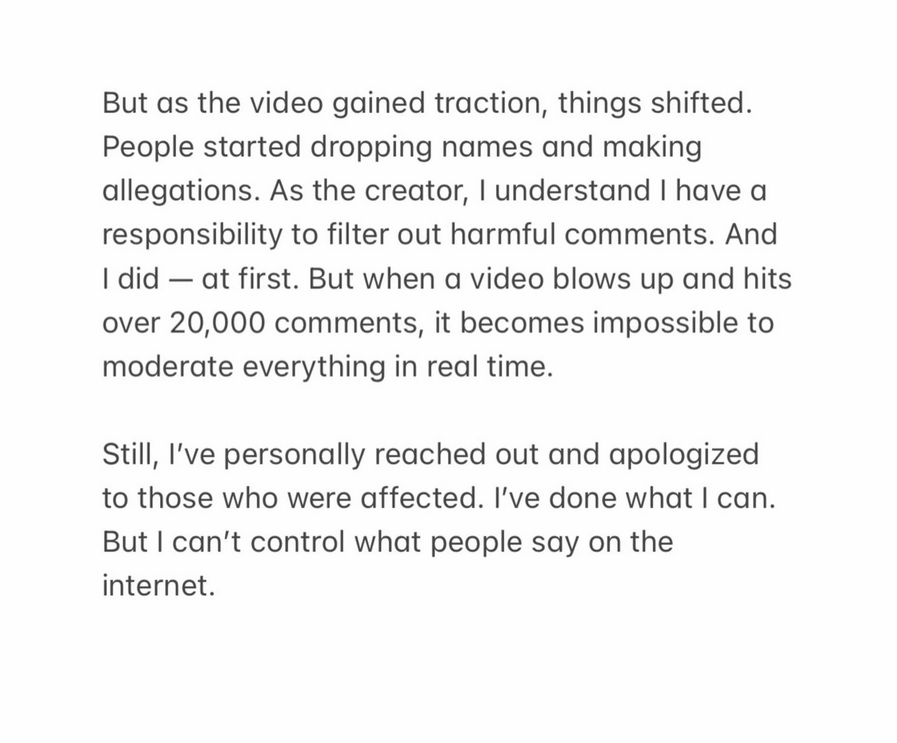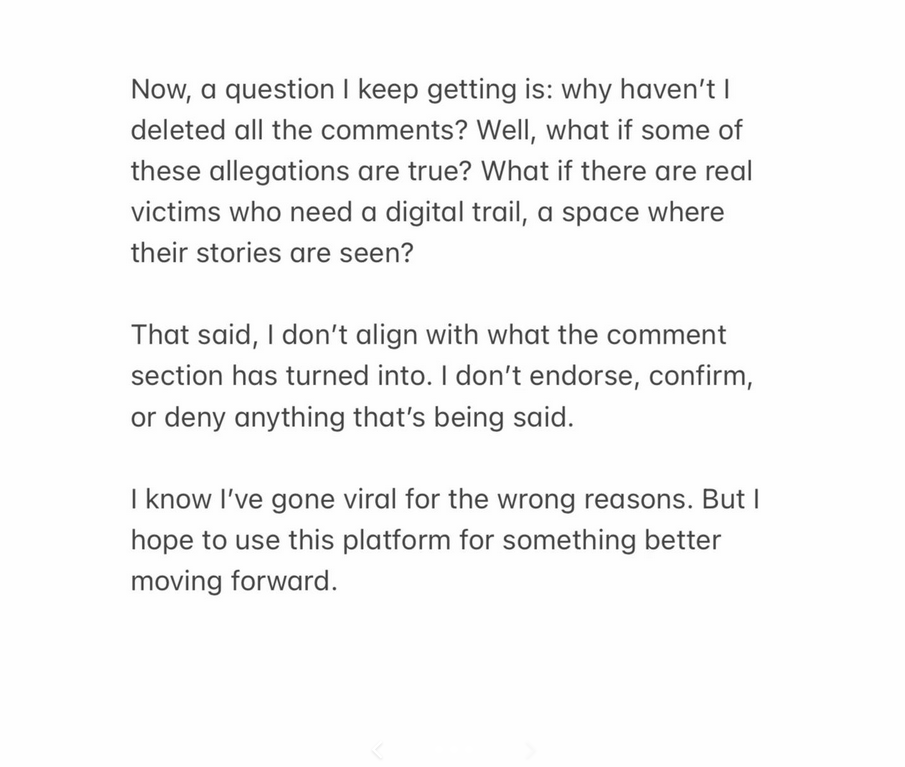By: Isuru Parakrama
April 14, Colombo (LNW): Kalathma Hitihamige, a young Sri Lankan TikTok creator who has recently gone viral for a controversial video, has issued a public statement addressing the uproar caused by a post she made that invited users to share scandalous stories involving celebrities.
The video, which has amassed over two million views and drawn more than 20,000 comments in less than a week, has ignited widespread debate and alarm over its contents, which include serious allegations levelled at some of Sri Lanka’s most recognisable public figures.
In her explanation, posted across her platforms, Kalathma clarified the original intent behind the now-notorious video. She says she was merely participating in a light-hearted TikTok trend, one which had been circulating internationally, encouraging users to recount unexpected encounters with celebrities.
“When I originally posted the video, I wasn’t asking for gossip,” she wrote. “The first few comments were lovely—someone even shared a story about meeting me at a kottu shop in the middle of nowhere. It was all harmless fun at first.”
However, things quickly took a darker turn. The post, which included a prompt asking followers to share not just their celebrity encounters but also the “most controversial stories they know”, drew an influx of incendiary responses.
Users began dropping names, tagging high-profile figures, and making unverified claims ranging from infidelity and betrayal to even criminal behaviour and exploitation. Several celebrities reportedly faced public backlash as a result, prompting some users to warn that the video could become grounds for defamation lawsuits.

In her statement, Kalathma expressed concern over how the situation escalated, stating that the video’s viral success transformed the nature of its comment section.
“As the video gained traction, things shifted,” she explained. “People started dropping names and making allegations. As the creator, I understand I have a responsibility to filter out harmful comments. And I did—at first. But when a video blows up and hits over 20,000 comments, it becomes impossible to moderate everything in real time.”
Kalathma also shared that she has made attempts to reach out to those affected. “I’ve personally reached out and apologised to those who were affected,” she said. “I’ve done what I can. But I can’t control what people say on the internet.”
Critically, she addressed the question many have asked: why did not she simply delete all the comments once the situation spiralled out of control? Her response was one of conflicted accountability. “What if some of these allegations are true?” she questioned. “What if there are real victims who need a digital trail, a space where their stories are seen?” She added, however, that she does not align with the tone or content of the current comments, nor does she endorse, confirm, or deny anything being shared.
Kalathma’s post struck a tone of reflection and regret. “I know I’ve gone viral for the wrong reasons,” she admitted. “But I hope to use this platform for something better moving forward.”
The controversy raises important questions about digital responsibility in the age of viral content. Whilst TikTok and similar platforms thrive on user engagement and spontaneous content creation, this incident reveals how quickly things can spiral when large audiences begin interpreting prompts in unpredictable—and sometimes dangerous—ways.
Creators like Kalathma, often young and navigating fame for the first time, are suddenly faced with moral and legal dilemmas far beyond the scope of a trending video.
The situation also spotlights the fragility of reputations in a digital world where accusations can be made casually and spread rapidly, regardless of whether they’re substantiated.
Sri Lankan social media users have already begun debating the ethical boundaries of anonymous allegations, with some expressing concern over mob justice, whilst others argue that platforms like TikTok are providing long-denied outlets for suppressed truths.
For Kalathma, the whirlwind of attention is clearly not what she anticipated. Whether or not further legal consequences arise, her statement suggests a desire to take greater responsibility for her digital influence. In a time where virality can either make or break a career, her experience may well serve as a cautionary tale—not just for creators, but for the online public at large.
Full Statement:




